UMMC's TAVR procedure prowess gets national accolade
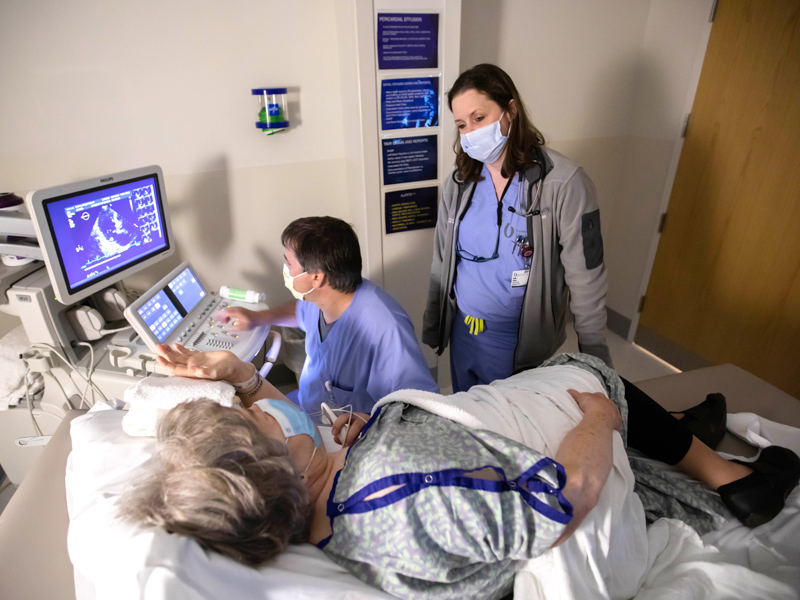
The state’s first and only Transcatheter Valve Center is both saving lives and restoring quality of life for University of Mississippi Medical Center patients whose aortic valve has narrowed, restricting blood flow and putting them at risk of heart failure or sudden death.
UMMC recently earned Center accreditation from the American College of Cardiology. The distinction speaks volumes for the Medical Center’s transcatheter aortic valve replacement (TAVR) program, said Dr. Kellan Ashley, an interventional cardiologist and associate professor in the Division of Cardiovascular Diseases. “This accreditation has only been offered for the last couple of years,” she said.
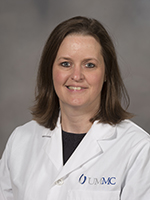
“We decided to seek it because the American College of Cardiology sets forth many standards and expectations for TAVR programs,” she said. “They expect programs to take a multidisciplinary team approach, and they put a lot of emphasis on outcomes.
“I like to say, ‘Have as high expectations as possible, and expect perfection or as close to it as possible,’” Ashley said. “Their expectations are that we be very proactive.
“This accreditation shows that we do all those things, and we hold ourselves to the same standards. That’s what sets us apart.”
TAVR is a minimally invasive procedure performed at University Heart. Similar to a stent placed in an artery, it calls for a tiny, fully collapsible device to be passed through a catheter to the damaged valve, where it pushes leaflets on the valve out of the way. The replacement valve then becomes the means for correcting and regulating blood flow in the artery.
The Medical Center performed its first TAVR in 2014 and its 100th in 2018. The procedure helps patients of all ages, but gives those over 70 the added benefit of it being minimally invasive.
That group includes a pair of cousins, Betty Bishop of Winona and Eugene Bishop of Pearl. It was only after her 2005 retirement from a 30-year career as an operating room tech that Betty Bishop had the first sign of an aortic valve defect: She had trouble walking two miles a day, with a friend, at her local Baptist church gym.
She visited her doctor in Winona and got an unexpected question. “She asked me if anyone had ever told me I had a heart murmur,” said Bishop, 81. “I said, ‘No. No one has.’”
The physician sent her to a nearby cardiologist who diagnosed her with the defect in her aortic valve, which separates the left ventricle from the aorta, which eventually leads to all arteries of the body. The valve opens so that blood can leave the heart through the aorta, but in Bishop’s case, the valve opening was becoming narrower, restricting the flow of blood. The condition can be triggered by the buildup of fatty substances and cholesterol deposits, putting stress on the left ventricle and eventually leading to heart failure and possibly sudden death.
“Every year it began to change more, and they said something would need to be done,” Bishop said of her aortic stenosis, which mostly leads to symptoms of chest pain, shortness of breath and can eventually lead to heart failure and sudden death if not treated. “My breath got shorter. I couldn’t do the work at home that I was used to. One of the doctors said I might live two years if I didn’t get anything done.”
But then, her cousin Eugene Bishop, who’d had TAVR at the Medical Center, reached out to her. So did her grandson’s wife, Brandi Reid, a registered cardiology interventional technologist in UMMC’s University Heart adult cardiac catheterization laboratory.
Ashley performed Eugene Bishop’s TAVR in August 2020 after his symptoms, combined with his congestive heart failure challenges, became severe. Ashley leads the Medical Center’s TAVR program, with Amy Lemly serving as nurse practitioner for the valve program and Kaitlyn Young serving as the valve program’s registered nurse coordinator.
Because the TAVR device is installed via a catheter in the groin, the procedure is much less complicated and risky than the former go-to of open heart surgery, and patients generally go home the next day.
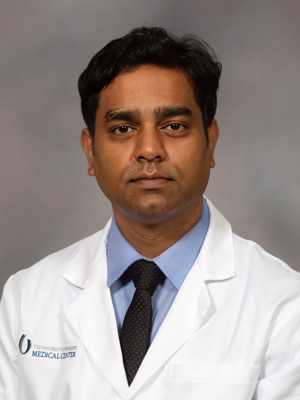
TAVR especially targets patients over 70 whose age and chronic diseases make them too high risk for open chest surgery, said Dr. Ashok Kumar Coimbatore Jeyakumar, assistant professor of cardiac surgery. Before TAVR, older patients “didn’t have other options.”
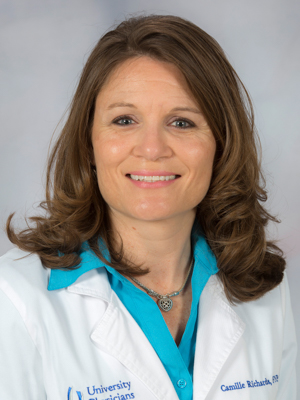
Michelle Wood, the American College of Cardiology’s director of operations-accreditation field staff, in a letter to Ashley gave high praise for University Heart’s close working relationships between surgeons and cardiologists. “It’s rare to have this level of communication and collaboration” at centers that perform TAVR, said Camille Richards, a cardiology nurse practitioner and executive director of University Heart.
“Our surgeons and cardiologists are located in the same area, and the physical building can house everything we need. It’s a one-stop shop,” Richards said. “Our cardiovascular holding area is very unique. Patients can have their procedures and remain here without having to go up to the main hospital. It’s a great safety element that Michelle noted, and one of our strengths.”
University Heart has made great strides in streamlining patients’ TAVR experience to make it easier on them and their recovery, Ashley said. “When we first started doing TAVR years ago, patients went to the ICU and had several days’ stay in the hospital. It was better than open heart surgery, but today we have a minimalist approach.”
The Medical Center’s TAVR patients benefit from a “100 percent heart team approach,” Coimbatore Jeyakumar said. That includes the team discussing each patient individually and deciding as a group who needs what approach. “The planning helps us a lot in setting up patients for a good, successful outcome,” he said.
“Everybody here is an academic physician, up to date with all the trends in the world. We have significant experience with complex cases,” Coimbatore Jeyakumar said. “That makes our team special compared to the rest of the state.”
Eugene Bishop said he had quadruple bypass surgery more than 20 years ago. But more recently, “I was having shortness of breath and couldn’t walk very far without resting and panting,” the 90-year-old retiree said.
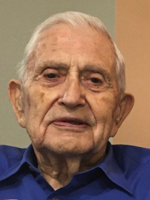
“I told Betty that it was an important surgery, and that it didn’t take too long and it didn’t hurt,” he said of TAVR. “Dr. Ashley is a real professional. I appreciate her and Kaitlyn. They were all good up there. Sometimes, Dr. Ashley checks on me after she finishes work.”
“Brandi begged me to come to Dr. Ashley at University,” Betty Bishop said. “Eugene convinced me this is where I should go.”
Betty Bishop’s procedure on April 28 was performed by Ashley and Coimbatore Jeyakumar. “I could tell pretty quick a difference in my breathing,” Bishop said. “I’m trying to get back to my walking routine. I’m going to physical therapy.”
Eugene Bishop said his breathing is much better, although health issues such as arthritis are a continuing challenge. He uses a cane and would like to rely on it less. “I love walking, and I like to play dominoes and go out to eat.”
Betty Bishop’s relationship with UMMC dates back to 1973, when she enrolled in school to become an OR tech. She misses the camaraderie of her former workplace, but retirement suits her and her husband Marion, 81, in other ways.
“I love my flowers,” she said. “I’m planting the pots on my desk.”
A month and a half after TAVR, “I’m better, and I’m ready to feel even better,” she said. “Each week, I can really see a difference.”


